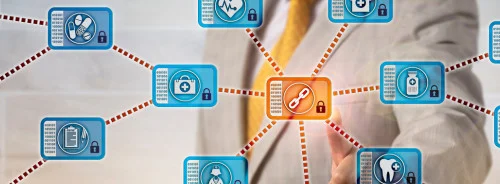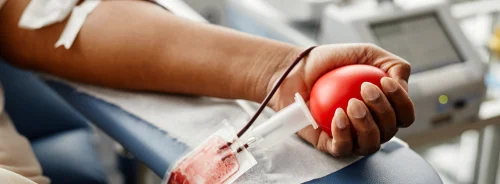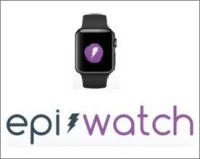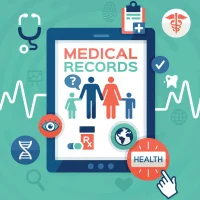A novel handheld, battery-powered device developed by Johns Hopkins researchers can quickly pick up vital signs from a patient's lips and fingertip. The prototype, called MouthLab, derived measurements of heart rate, blood pressure, breathing rate, temperature and blood oxygen from 52 volunteers, which compared well with vital signs measured by standard hospital monitors, according to a new study published in the Annals of Biomedical Engineering.
MouthLab, which also takes a basic electrocardiogram, consists of a small, flexible mouthpiece connected to a handheld unit about the size of a telephone receiver. The mouthpiece holds a temperature sensor and a blood volume sensor. The thumb pad on the handheld unit has a miniaturised pulse oximeter that uses beams of light to measure blood oxygen levels. Other sensors measure breathing from the nose and mouth.
"It can be used by people without special training at home or in the field," says the device's lead engineer, Gene Fridman, PhD, an assistant professor of biomedical engineering and of otolaryngology-head and neck surgery at Johns Hopkins. The device may help detect early signs of medical emergencies, such as heart attacks, he says, or avoid unnecessary emergency room visits when a patient's vital signs are good.
Since MouthLab tracks vital signs by mouth, researchers say future versions of the device will be able to detect chemical cues in blood, saliva and breath that act as markers for serious health conditions. "We envision the detection of a wide range of disorders, from blood glucose levels for diabetics, to kidney failure, to oral, lung and breast cancers," Dr. Fridman points out.
MouthLab also has three electrodes for ECGs: one on the thumb pad, one on the upper lip of the mouthpiece and one on the lower lip. That ECG signal is the basis for MouthLab's novel way of recording blood pressure. When the signal shows the heart is contracting, the device optically measures changes in the volume of blood reaching the thumb and upper lip. Unique software converts the blood flow data into systolic and diastolic pressure readings.
The hand unit relays data by Wi-Fi to a nearby laptop or smart device, where graphs display real-time results. The next generation of the device will display its own data readouts with no need for a laptop, Dr. Fridman says, adding that patients will be able to send results to their doctors via cellphone.
"Our final version will be smaller, more ergonomic, more user-friendly and faster," he adds. "Our goal is to obtain all vital signs in under 10 seconds."
Source: Johns Hopkins Medicine
Image credit: Yuankui Zhu/Johns Hopkins Medicine
MouthLab, which also takes a basic electrocardiogram, consists of a small, flexible mouthpiece connected to a handheld unit about the size of a telephone receiver. The mouthpiece holds a temperature sensor and a blood volume sensor. The thumb pad on the handheld unit has a miniaturised pulse oximeter that uses beams of light to measure blood oxygen levels. Other sensors measure breathing from the nose and mouth.
"It can be used by people without special training at home or in the field," says the device's lead engineer, Gene Fridman, PhD, an assistant professor of biomedical engineering and of otolaryngology-head and neck surgery at Johns Hopkins. The device may help detect early signs of medical emergencies, such as heart attacks, he says, or avoid unnecessary emergency room visits when a patient's vital signs are good.
Since MouthLab tracks vital signs by mouth, researchers say future versions of the device will be able to detect chemical cues in blood, saliva and breath that act as markers for serious health conditions. "We envision the detection of a wide range of disorders, from blood glucose levels for diabetics, to kidney failure, to oral, lung and breast cancers," Dr. Fridman points out.
MouthLab also has three electrodes for ECGs: one on the thumb pad, one on the upper lip of the mouthpiece and one on the lower lip. That ECG signal is the basis for MouthLab's novel way of recording blood pressure. When the signal shows the heart is contracting, the device optically measures changes in the volume of blood reaching the thumb and upper lip. Unique software converts the blood flow data into systolic and diastolic pressure readings.
The hand unit relays data by Wi-Fi to a nearby laptop or smart device, where graphs display real-time results. The next generation of the device will display its own data readouts with no need for a laptop, Dr. Fridman says, adding that patients will be able to send results to their doctors via cellphone.
"Our final version will be smaller, more ergonomic, more user-friendly and faster," he adds. "Our goal is to obtain all vital signs in under 10 seconds."
Source: Johns Hopkins Medicine
Image credit: Yuankui Zhu/Johns Hopkins Medicine
References:
Fridman GY et al. (2015) MouthLab: A Tricorder Concept Optimized for Rapid Medical Assessment. Annals of Biomedical Engineering,
September 2015; 43 (9): 2175 DOI: 10.1007/s10439-015-1247-1
Latest Articles
healthmanagement, Johns Hopkins, handheld device, vital signs, heart rate, blood pressure
A novel handheld, battery-powered device developed by Johns Hopkins researchers can quickly pick up vital signs from a patient's lips and fingertip.









